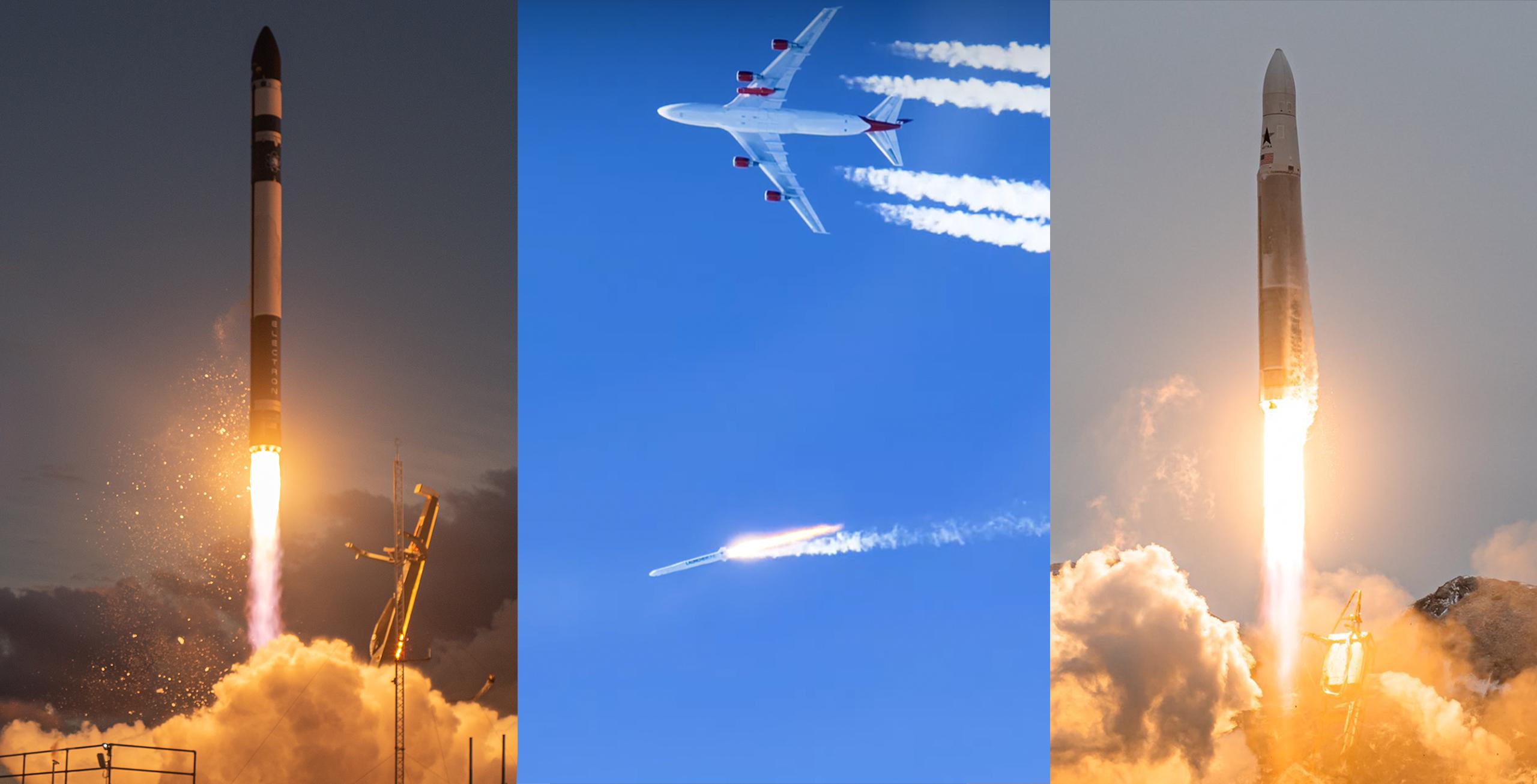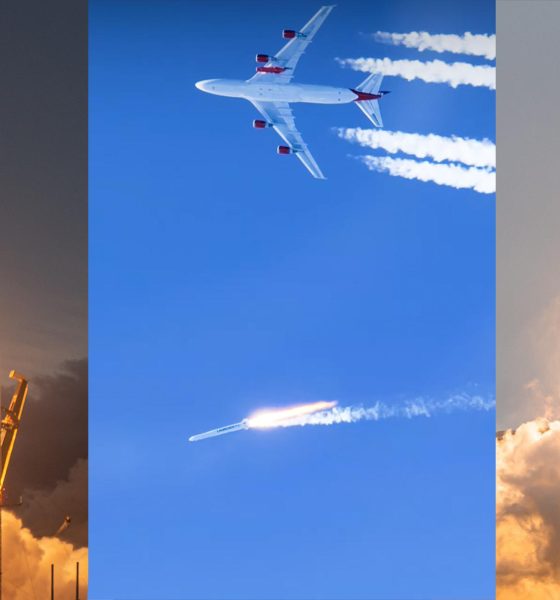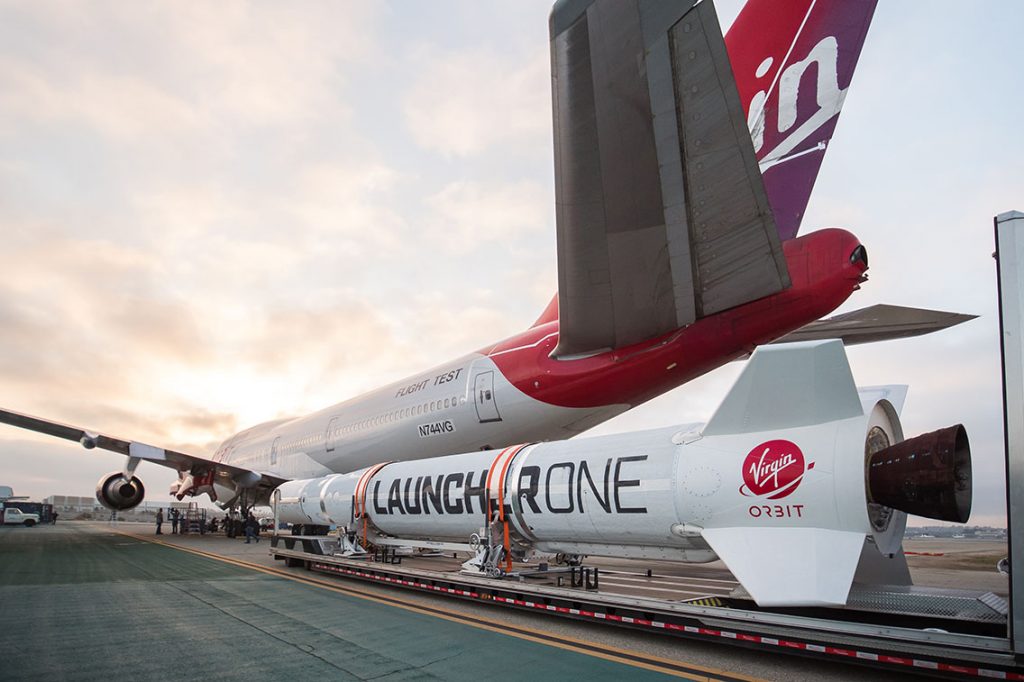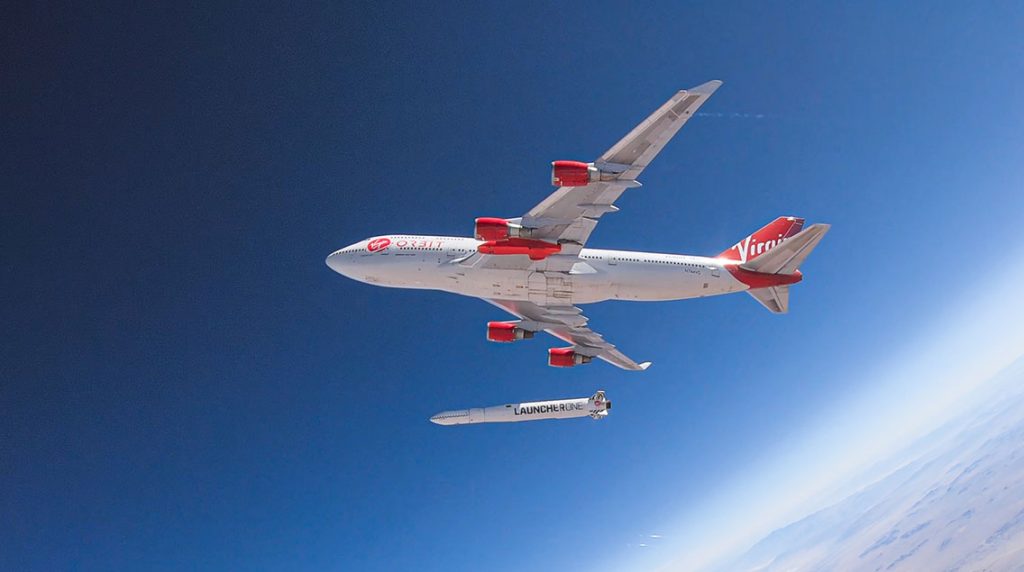

News
Rocket Lab, Virgin Orbit lead a new class of small rockets with big ambitions for 2021
SpaceX’s reign as the only privately funded American spaceflight company to reach and successfully deploy small satellite payloads into orbit ended on January 21, 2018, when Rocket Lab’s Electron rocket delivered three customer CubeSats to orbit for the first time.
SpaceX and Rocket Lab have since been the only private American companies to offer dedicated and rideshare delivery of small satellites to orbit. That is until Virgin Orbit joined the competition with the success of its Launch Demo 2 mission earlier this week.
Airdropping rockets
On Sunday, January 17, Virgin Orbit – one of two spaceflight companies backed by billionaire Richard Branson – joined SpaceX and Rocket Lab as the next private American rocket launcher sending small satellites to space. Virgin Orbit delivers its payload slightly differently than SpaceX and Rocket Lab. Virgin Orbit can uniquely offer its customers the flexibility of launch site because its liquid-fueled rocket is dropped mid-air from under the wing of a massive Boeing 747 before propelling itself to space.
In the Spring of 2020 Virgin Orbit conducted its first Launch Demo mission off of the coast of southern California. Prior to the rocket’s first stage ignition, the company achieved the majority of its intended test flight targets. Just after LauncherOne’s first stage ignition the rocket prematurely shut down resulting in the complete loss of the rocket and its payload as it fell to the ocean.

After months of investigation, Virgin Orbit attributed the prematurely terminated flight to a component failure that led to a breach of a high-pressure line starving the engine of Liquid Oxygen resulting in the immediate loss of propulsion. The issue was remedied quickly and Virgin Orbit aimed to fly and launch again in December 2020 for its Launch Demo 2 mission attempting to successfully achieve orbit by the close of the year. In mid-December, the launch date of Launch Demo 2 was postponed until January 2021 due to impacts to operation and scheduling caused by the Covid-19 pandemic.
Virgin Orbit’s 747, Cosmic Girl, piloted by Kelly Latimer took to the skies on Sunday, January 17 with a fully fueled LauncherOne rocket loaded with a payload of nine CubeSat missions made up of ten spacecraft for NASA’s Educational Launch of NanoSatellites (ELaNa XX) series contracted under NASA’s Venture Class Launch Services program.

The Launch Demo 2 mission went off without a hitch. Just as with the first Launch Demo, all pre-launch activities proceeded nominally with Cosmic Girl reaching an altitude of 30,000 feet prior to the release of LauncherOne over the Pacific Ocean. Once released into free flight, the rocket’s first stage engine ignited and carried it through the atmosphere until separation and second stage engine ignition beyond the Kármán line – the recognized point at which “space” is defined beyond Earth’s atmosphere. Eventually, all nine payloads were successfully deployed into orbit completing the first-ever successful mission of an orbital class, liquid-fueled, air-launched rocket to reach space.
Another One Leaves The Crust
SpaceX has set the pace for space in 2021 successfully achieving two orbital-class launches within the first twenty days of the year with a third mission scheduled to depart Launch Complex 40 at Cape Canaveral Space Force Base in Florida on Friday, January 22. Likewise, Rocket Lab looks to aggressively exceed its previous launch record of seven missions in one calendar year. The only way to demolish a previous record is to launch frequently from multiple spaceports. SpaceX currently has three active launchpads, two in Florida and one in California. Within 2021, Rocket Lab will also have three operational launchpads, two in New Zealand and one in Virginia.
On Wednesday, January 20, 2021 – its third anniversary of first making it to orbit – Rocket Lab successfully launched its first Electron mission of 2021 nicknamed “Another One Leaves The Crust.” After standing down from a previous launch attempt on January 16 due to an erroneous sensor, the eighteenth overall mission of the Electron rocket successfully launched and deployed a single communications microsatellite for the European space technology company, OHB Group. The mission took place from Launch Complex 1 in Mahia, New Zealand at 07:26 UTC. This mission brings the total satellites deployed by Rocket Lab to 97.
In a statement provided by Rocket Lab, founder and CEO, Peter Beck, states that “We’re proud to be delivering a speedy and streamlined path to orbit for OHB Group on this mission, with launch taking place within six months of contract signing. By flying as a dedicated mission on Electron, OHB and their mission partners have control over launch timing, orbit, integration schedule, and other mission parameters.”
2021 – The year of the small satellite launcher
Expect SpaceX, Rocket Lab, and Virgin Orbit to be joined by other small launchers looking to break into the market sooner rather than later. Another NASA Venture Class Launch Services provider, Astra – a California-based small satellite launcher that launches from Kodiak, Alaska – narrowly missed beating out Virgin Orbit for the third-place slot in the competition to deliver small satellites to orbit.
On December 15, 2020, Astra launched its small orbital-class vehicle, Rocket 3.2, for the second time from Pacific Spaceport Complex on Kodiak Island, Alaska. The vehicle soared past the Kármán line with the upper stage reaching its targeted altitude of 380 kilometers at 7.2 km/sec but falling just shy of achieving orbital velocity at 7.68 km/sec.
Astra is not the only small private spaceflight company looking to join the ranks of SpaceX, Rocket Lab, and now Virgin Orbit. Texas-based Firefly Aerospace is also expected to join the elite group of privately funded spacefaring companies this year.
In October 2020, Firefly successfully completed acceptance testing of the first stage of its small class Alpha rocket. The stage completed a 35-second static fire demonstrating a full range of thrust vector control maneuvers. The first stage of the Alpha rocket has since been shipped to Firefly’s launch complex at Space Launch Complex 2 West (SLC-2W) at Vandenberg Air Force Base in California. In Novemeber 2020 Firelfy began the integration process of the payloads for the maiden Alpha launch.
In December 2020, Astra and Firefly were awarded Venture Class Launch Services Demonstration 2 firm fixed-priced contracts by NASA’s Launch Services Program along with a third small class launcher, California based Relativity Space. Astra received $3.9 million in funding while Firefly was awarded $9.8 million and Relativity received $3 million to place CubeSats in Low Earth Orbit.
SmallSats and CubeSats are quickly becoming the preferred method of operating in orbit because it is technology and opportunity that is attainable for many smaller companies and other parties interested in reaching space such as universities. As SmallSats continue to rise in popularity so too will the demand to launch them. 2021 is already shaping up to become the year that produces the highest amount of private commercialized spaceflight, ever.
Check out Teslarati’s Marketplace! We offer Tesla accessories, including for the Tesla Cybertruck and Tesla Model 3.

Elon Musk
Elon Musk’s X will start using a Tesla-like software update strategy
The initiative seems designed to accelerate updates to the social media platform, while maintaining maximum transparency.

Elon Musk’s social media platform X will adopt a Tesla-esque approach to software updates for its algorithm.
The initiative seems designed to accelerate updates to the social media platform, while maintaining maximum transparency.
X’s updates to its updates
As per Musk in a post on X, the social media company will be making a new algorithm to determine what organic and advertising posts are recommended to users. These updates would then be repeated every four weeks.
“We will make the new 𝕏 algorithm, including all code used to determine what organic and advertising posts are recommended to users, open source in 7 days. This will be repeated every 4 weeks, with comprehensive developer notes, to help you understand what changed,” Musk wrote in his post.
The initiative somewhat mirrors Tesla’s over-the-air update model, where vehicle software is regularly refined and pushed to users with detailed release notes. This should allow users to better understand the details of X’s every update and foster a healthy feedback loop for the social media platform.
xAI and X
X, formerly Twitter, has been acquired by Elon Musk’s artificial intelligence startup, xAI last year. Since then, xAI has seen a rapid rise in valuation. Following the company’s the company’s upsized $20 billion Series E funding round, estimates now suggest that xAI is worth tens about $230 to $235 billion. That’s several times larger than Tesla when Elon Musk received his controversial 2018 CEO Performance Award.
As per xAI, the Series E funding round attracted a diverse group of investors, including Valor Equity Partners, Stepstone Group, Fidelity Management & Research Company, Qatar Investment Authority, MGX, and Baron Capital Group, among others. Strategic partners NVIDIA and Cisco Investments also continued support for building the world’s largest GPU clusters.
News
Tesla FSD Supervised wins MotorTrend’s Best Driver Assistance Award
The decision marks a notable reversal for the publication from prior years, with judges citing major real-world improvements that pushed Tesla’s latest FSD software ahead of every competing ADAS system.

Tesla’s Full Self-Driving (Supervised) system has been named the best driver-assistance technology on the market, earning top honors at the 2026 MotorTrend Best Tech Awards.
The decision marks a notable reversal for the publication from prior years, with judges citing major real-world improvements that pushed Tesla’s latest FSD software ahead of every competing ADAS system. And it wasn’t even close.
MotorTrend reverses course
MotorTrend awarded Tesla FSD (Supervised) its 2026 Best Tech Driver Assistance title after extensive testing of the latest v14 software. The publication acknowledged that it had previously criticized earlier versions of FSD for erratic behavior and near-miss incidents, ultimately favoring rivals such as GM’s Super Cruise in earlier evaluations.
According to MotorTrend, the newest iteration of FSD resolved many of those shortcomings. Testers said v14 showed far smoother behavior in complex urban scenarios, including unprotected left turns, traffic circles, emergency vehicles, and dense city streets. While the system still requires constant driver supervision, judges concluded that no other advanced driver-assistance system currently matches its breadth of capability.
Unlike rival systems that rely on combinations of cameras, radar, lidar, and mapped highways, Tesla’s FSD operates using a camera-only approach and is capable of driving on city streets, rural roads, and freeways. MotorTrend stated that pure utility, the ability to handle nearly all road types, ultimately separated FSD from competitors like Ford BlueCruise, GM Super Cruise, and BMW’s Highway Assistant.
High cost and high capability
MotorTrend also addressed FSD’s pricing, which remains significantly higher than rival systems. Tesla currently charges $8,000 for a one-time purchase or $99 per month for a subscription, compared with far lower upfront and subscription costs from other automakers. The publication noted that the premium is justified given FSD’s unmatched scope and continuous software evolution.
Safety remained a central focus of the evaluation. While testers reported collision-free operation over thousands of miles, they noted ongoing concerns around FSD’s configurable driving modes, including options that allow aggressive driving and speeds beyond posted limits. MotorTrend emphasized that, like all Level 2 systems, FSD still depends on a fully attentive human driver at all times.
Despite those caveats, the publication concluded that Tesla’s rapid software progress fundamentally reshaped the competitive landscape. For drivers seeking the most capable hands-on driver-assistance system available today, MotorTrend concluded Tesla FSD (Supervised) now stands alone at the top.
News
Elon Musk’s Grokipedia surges to 5.6M articles, almost 79% of English Wikipedia
The explosive growth marks a major milestone for the AI-powered online encyclopedia, which was launched by Elon Musk’s xAI just months ago.

Elon Musk’s Grokipedia has grown to an impressive 5,615,201 articles as of today, closing in on 79% of the English Wikipedia’s current total of 7,119,376 articles.
The explosive growth marks a major milestone for the AI-powered online encyclopedia, which was launched by Elon Musk’s xAI just months ago. Needless to say, it would only be a matter of time before Grokipedia exceeds English Wikipedia in sheer volume.
Grokipedia’s rapid growth
xAI’s vision for Grokipedia emphasizes neutrality, while Grok’s reasoning capabilities allow for fast drafting and fact-checking. When Elon Musk announced the initiative in late September 2025, he noted that Grokipedia would be an improvement to Wikipedia because it would be designed to avoid bias.
At the time, Musk noted that Grokipedia “is a necessary step towards the xAI goal of understanding the Universe.”
Grokipedia was launched in late October, and while xAI was careful to list it only as Version 0.1 at the time, the online encyclopedia immediately earned praise. Wikipedia co-founder Larry Sanger highlighted the project’s innovative approach, noting how it leverages AI to fill knowledge gaps and enable rapid updates. Netizens also observed how Grokipedia tends to present articles in a more objective manner compared to Wikipedia, which is edited by humans.
Elon Musk’s ambitious plans
With 5,615,201 total articles, Grokipedia has now grown to almost 79% of English Wikipedia’s article base. This is incredibly quick, though Grokipedia remains text-only for now. xAI, for its part, has now updated the online encyclopedia’s iteration to v0.2.
Elon Musk has shared bold ideas for Grokipedia, including sending a record of the entire knowledge base to space as part of xAI’s mission to preserve and expand human understanding. At some point, Musk stated that Grokipedia will be renamed to Encyclopedia Galactica, and it will be sent to the cosmos.
“When Grokipedia is good enough (long way to go), we will change the name to Encyclopedia Galactica. It will be an open source distillation of all knowledge, including audio, images and video. Join xAI to help build the sci-fi version of the Library of Alexandria!” Musk wrote, adding in a later post that “Copies will be etched in stone and sent to the Moon, Mars and beyond. This time, it will not be lost.”








